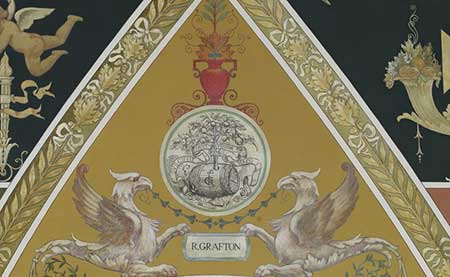
The early printers of the Bible incurred great risks. Richard Grafton and Edward Whitchurch, together with Miles Coverdale, were entrusted to arrange for the printing of Thomas Mathew’s translation. The work was given to the printers in Paris, as the English printers were not very highly esteemed. The book was nearly completed when the Inquisition effectually stopped the further progress of the work by seizing the sheets, and Grafton with his companions were forced to flee. Richard Grafton and Whitchurch contrived to obtain their types from Paris, and the Bible was completed in 1539. Thus they became printers themselves, and as a reward for his labor, when the Roman Catholics again became rulers in high places, Richard Grafton was imprisoned.
The title of the Bible which was begun in Paris and finished in London is as follows:—
The Byble in Englyshe. 1539. Folio.
“The Byble in Englyshe, that is to saye the content of all the Holy Scrypture, bothe of the Olde, and Newe Testament, truly translated after the veryte of the Hebrue and Greke textes, by the dylygent studye of dyuerse excellent learned men, expert in the forsayde tongues. Printed by Rychard Grafton and Edward Whitchurche. Cumpriuilegio—solum. 1539.”
Grafton was a voluminous author who wrote part of Hall’s Chronicles and an abridgment of the Chronicles of England. His printer’s mark was a graft, or young tree, growing out of a tun (shown above from the Thomas Jefferson building in Washington, DC).
—Adapted from Ditchfield’s Books Fatal to their Authors.
